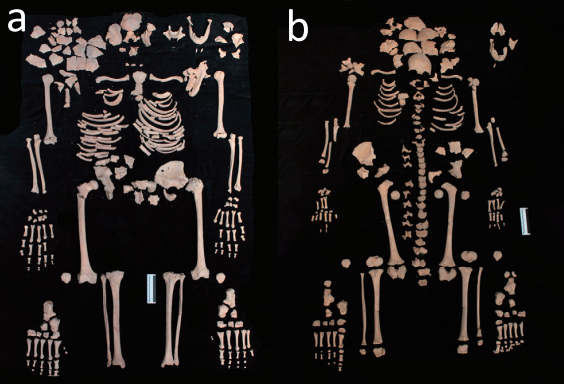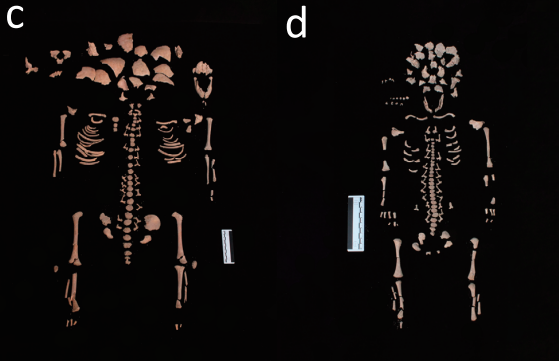Italy's Black Death cemetery reveals gruesome burial of pregnant mother and her fetus
The bubonic plague reached Genoa in the summer of 1347.

The remains of three victims of the Black Death have been discovered for the first time in a northern Italian cemetery, in Genoa. But the burial contained an even more disturbing feature – one of the victims had been pregnant when she died, expelling the fetus within her grave.
The Black Death is arguably the most devastating pandemic in human history. The disease, also known as bubonic plague is estimated to have killed more than half of Europe's population throughout the second part of the 14<sup>th century. The pathogen responsible was the Yersinia pestis.
The epidemic hit the city of Genoa in the late summer of 1347, which then became an epicentre of the disease from which it spread throughout the Italian mainland.
Built alongside the routes that crisscrossed northern Italy, a number of institutions had traditionally welcomed traders and pilgrims, offering them a roof when they needed to rest from their long journeys. As points of passages for travellers, these structures became hotspots of plague transmission.
One of such institution was the hospital of San Nicolao near Genoa. In 2006, archaeologists found a multiple burial dated to the second half/end of the 14th century in the cemetery located next to it. They have just now published results of excavations conducted at the site in the journal Anthropology.
Mother and fetus
The burial contained the skeletal remains of four individuals, one of which was a 38–40 week pregnant woman with her fetus and two younger individuals. Analyses revealed that one of them was probably 12 years old when he died, while the other was about 3. The woman was in her thirties. More work needs to be done to determine whether she was the mother of the two children and whether they were boys or girls.
Examining the position of geological strata, the researchers also showed that these individuals were buried simultaneously, at a time when the Black Death was wiping out much of the populations of Italy and Europe.

It was thus hypothesised that these individuals might have died from the plague. This was confirmed by analyses of the spongy bone (the inner part of the bone), which showed that three of them – the woman, the fetus and the older child – tested positive for the F1 antigen of Yersinia pestis.
"The other child possibly died of plague as well. Even if we did not find traces of Yersinia pestis in his bone fragment, this does not exclude a plague related death. A negative result in a small child with a lesser degree of mineralisation - which implies a lesser degree of preservation - can be expected. If the concentrations of the F1 antigen were too low, it is possible that we simply missed them", lead author Raffaella Bianucci, from Warwick University, told IBTimes UK.

The fetus was expelled from the mother's womb after she died. It was found to be complete, laying within the birth canal – a gruesome phenomenon known as 'coffin birth'. Few other cases have been reported to date.
It's not clear who these individuals were and what they were doing at the hospital of San Nicolao, but their death represents the first direct evidence of the bubonic plague in this region of northern Italy, near Genoa, in the 14th-century.
The results support the theory that the epidemic originated from the port-city Genoa and then spread out along the main communication and trade routes.
© Copyright IBTimes 2025. All rights reserved.




















